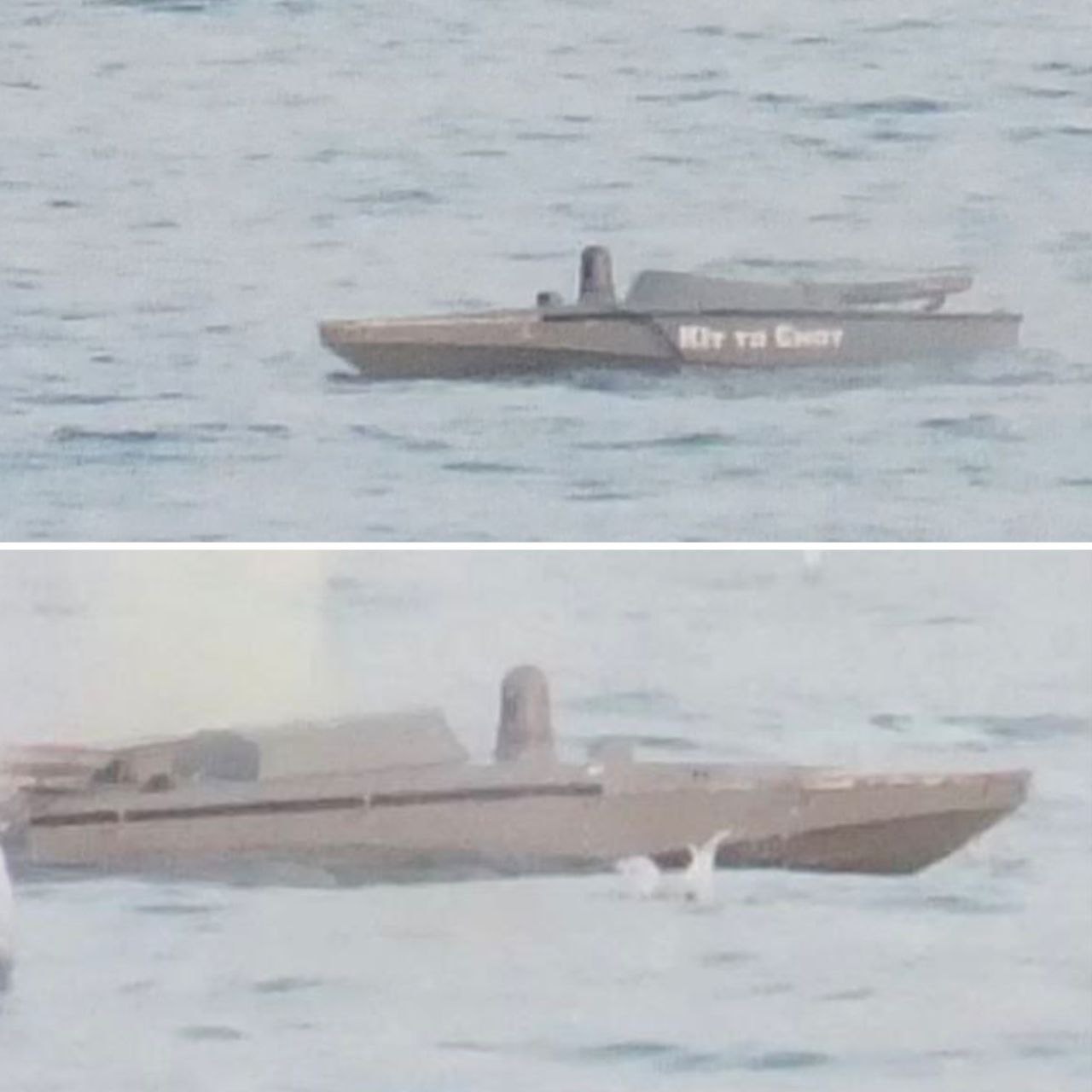A special and stealthy Ukrainian drone unit hunts Russian soldiers exclusively at night, exploiting their advantage in possessing more night-time viewing and surveillance equipment than the Russian counterparts.
Israeli Merkava Tanks Could Be Headed To Ukraine As Tel Aviv Confirms Its MBTs Have A Customer In Europe?
A report in CNN featured the team that employs commercial off-the-shelf and Ukrainian-made heavy quadcopter drones. The unit straps bombs onto the UAVs and drops them on Russian ground soldiers before quickly flying back, and the drone operators swiftly pack up their gear and relocate before being detected by the Russians.
The secretive night-time strike formation comprises elements from the Security Service of Ukraine – commonly known as SBU – and the country’s Patrol Police.
Tedious Planning, Attack & Exfiltration
The report reveals the team’s careful, painstakingly disciplined tactics, where hours are spent identifying targets throughout the day, with the attacks taking place at night. Russian targets are chosen after flying surveillance drones toward their positions and a combination of additional intelligence from other Ukrainian units.
Following comprehensive information about the targets and their surroundings – in this case, a team of Russian soldiers firing Kornet anti-tank guided missiles (ATGM) toward their troops – the Ukrainian drone unit drives to the spot in complete darkness with their headlights turned off.
Relying on their night vision goggles, they navigate the road and park several hundred meters away from their operational zone. Walking to the launch site, they prepare the drone and attach the nearly 20-kilogram drop bomb with 3D-printed fins and pipes under the drone.
SBU surveillance and electronic warfare specialists also intercept text messaging between Russian units, with one soldier messaging the other about a Ukrainian drone being heard. The drone’s handlers then plan to fly back the UAV along a predetermined route, pack up and leave, all along working in red light, which is less likely to be detected by the Russians.
The team then plans the next night’s flight with new coordinates, targets, routes, and fresh operational frequencies.
New Sea-Killer Drone Used in Last Black Sea Attack?
Meanwhile, the suicide maritime drones used in the latest attack on a Russian navy warship on the Black Sea on June 11 seem to belong to a new Unmanned Surface Vessel (USV) model and look similar to one revealed in March this year.
This USV has been identified as ‘Cat and Racoon’ by the Russian Ministry of Defense (RuMoD), based on the Cyrillic letters printed on its left side.
Pictures of the drone boat that surfaced in March were printed with the word ‘Monobank’ written on the front right-hand side. This is the Ukrainian bank that collects donations from private citizens for the war effort.
It is unclear if the latest USV is an entirely different model or a slight modification of the ‘Monobank’ vessel. However, all the previous attacks involved the USV seen in Ukrainian government promotional videos.
Six killer USVs were employed in the latest attack on the intelligence-gathering ship ‘Priazovye,’ while it was performing surveillance missions and “ensuring security along the routes of the TurkStream and Blue Stream gas pipelines in the southeastern part of the Black Sea,” according to the Russian Ministry of Defense (RuMoD). It said the attack was “unsuccessful” as it destroyed all six boats.
Fifth Attack – More To Come?
This is the fifth such attack by the menacing kamikaze USVs on the Russian Navy fleet and the second such taking place on the high seas on the Black Sea, with the previous three taking place at the Sevastopol naval base in Crimea, home to Russia’s Black Sea Fleet.
The first attack occurred in October 2022 with nine aerial and seven sea drones; the second attempt was on March 23 with three USVs; the third attack on April 24 involved only two USVs. The last and possibly the most famous attempt occurred near Turkey on May 24 and saw three USVs being destroyed while attacking another spy vessel, the Ivan Khurs electronic intelligence ship.

New Sea Killer Drone Boat
Different than the earlier ones with a smaller size, the original pictures did not show the boats having protruding masts, communication antennas, electro-optical systems, propellers, water jet propulsion, etc.
The close-up grab of the boat from the Russian Navy publicity video shows these systems on the vessel. Assuming it is the Monobank drone, it means Ukraine outfitted this model with the devices over time and planned to put them into use.
A spherical object in the front could be an electro-optical system that would relay back images and videos to the drone’s operators. However, the boat’s bow and stern appear to be vastly different. The Monobank USV has a more curved bow and sloping hull, while they are straighter and sharper than the one used in the current attack.
The stern of the latest USV also appears to have a flat carrier-like platform supported by stilts. These could carry the communication equipment, particularly the Starlink satellite internet terminal that Ukraine widely uses for its military communications and for guiding its drones.
Made In Ukraine With Western Help
It is not clear if this new make of USV is a completely in-house Ukrainian effort or some form of Western technical support. Assuming the development is fully Ukrainian, a substantial degree of US or NATO technical consultancy cannot be ruled out, given it has been their military technology that Kyiv has been entirely dependent upon to continue its war with Russia.
This could be for critical systems like navigation and guidance components, which are likely to have been sent to Ukraine and assembled on the boat.

It has been fighting completely using Western weapons and targetting data from American airborne ISR planes to conduct its drone strikes inside Russia. It also proves that Russian strikes on its defense industry to “demilitarize” Ukraine have been successful.
- The author can be reached at satamp@gmail.com
- Follow EurAsian Times on Google News




